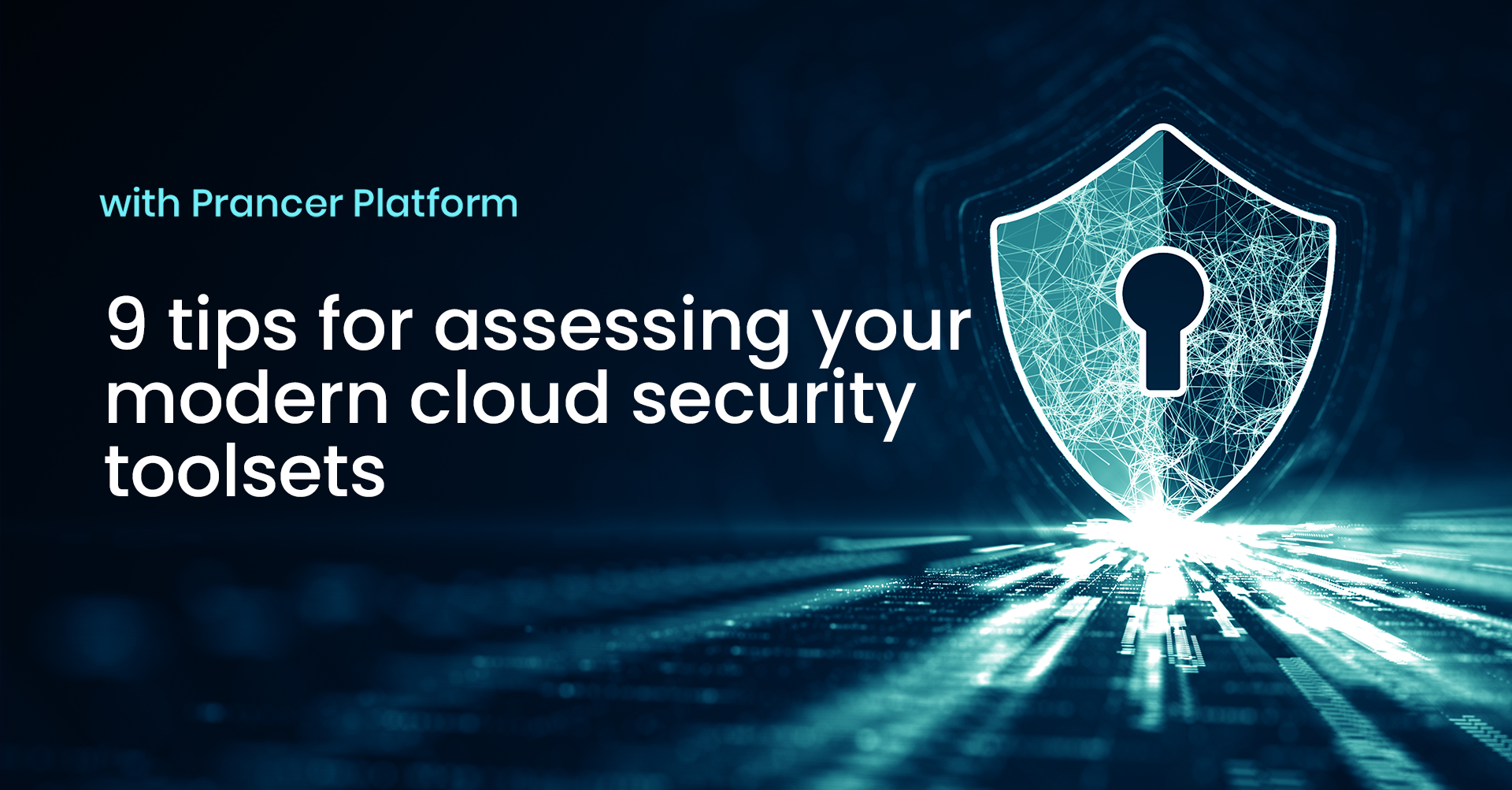

Cloud specific security tooling is essential for protecting your cloud application and data. Prancer, organizations in the cloud use multiple open source tools to secure their cloud ecosystem across several domains. This includes workload protection, infrastructure protection, application protection, static code analysis and security incident management. How are you evaluating your cloud security toolsets? Here are 9 tips used in the industry to evaluate whether your system is effective…or not!
With security toolings protecting data from unauthorized access (and most likely several data losses), it inherently has access to sensitive customer information. Tools can only be effective if they are transparent to users. If users are not aware of the tool’s presence, they may inadvertently bypass its security features. Additionally, transparency allows users to see how the tool works and understand its capabilities. To better understand “transparency” of your tool, you should ask yourself two questions:
How does the cloud security vendor manage “operator access” to the data?
Ideally, all the data should be encrypted, however many security tools process sensitive data in clear text. For such systems, it’s prudent for vendor systems and operators to have a process for granting access to authorized users. Your system should ensure that only authorized personnel have access to sensitive data (monitoring operator activity and revoking access if needed).
How is multi-tenancy managed, especially if you use a SAAS security platform?
More and more security businesses are turning to SAAS. With many customer databases kept by SAAS firms, a robust multi-tenant architecture at scale is required. It’s critical to keep 1.)network segmentation, 2.)identity and access segmentation, and 3.)data segregation in place across the tenants so that one tenant’s breach or outage does not have a downstream impact on the other tenants.
How are secrets and data encryption keys managed?
It’s critical to maintain a lifecycle of secrets and encryption keys. Understanding your system’s key creations, rotation policies, access methods, and data deletion procedures ensures that your data protection plan can face various crisis situations.
Security solutions should be adaptable enough to meet your company’s specific control needs and culture. To ensure that it is most beneficial for your users, you may modify the security programs and projects to match your organization’s particular infrastructure. Tailoring integrations with existing systems for logging, monitoring, asset managing and incident responding is critical to fostering successful collaborations.
The advantages of API-powered security solutions are numerous. First, they may be readily integrated with existing SDLC processes via well-defined API connections. You may use your present infrastructure to boost its capacity and functionality by utilizing this connection. Second, tools that are powered by APIs can automate the tasks that would otherwise be performed by security analysts.
Modern businesses choose to enable security services in a managed approach. This includes using an intuitive, agentless method to relieve the strain on their ops teams. Managed services are frequently less expensive than buying and maintaining your own security tools. These service providers keep the tools up to date with the most recent security enhancements, detections, findings, and fixes for your specific operations.
The accuracy of risk ratings from security solutions are limited unless they are aware of how cyber attacks operate (and how they can be prevented). These “risk ratings” should focus on a specific sector such as network security, static code analysis, vulnerability monitoring or IAM security. By understanding the end-to-end attack path, the tool can identify potential security vulnerabilities and take steps to mitigate them. Additionally, this understanding can help the tool provide better protection against future attacks and check the effectiveness of your zero trust controls.
Your security tool for your business vertical should support your required security standards for your industry (such as NIST, HIPPA, PCI, and ISO). Your tools should create the functionality, business processes and reporting dashboard curated to achieve these security objectives. This contextualization enables the software to more effectively defend against aberrant behaviors that are more likely in your industry sector.
Shift-left toolsets significantly cut down the time and effort necessary to identify and address risks in production run times. Shift-left security tools seamlessly integrate with the developer experience around CI/CD pipelines. They should be seamless with their IDEs of developer environments to provide comprehensive security feedback as the code is being written.
The hybrid cloud is here to stay, particularly for the crown jewels of legacy data and systems that are still on-premises. The cloud/on-premise integration will endure for a long time into the future.
A cloud-based/on-premise security solution’s centralized “single pane of glass” management console should let you see all of your assets in one spot—regardless of where they’re located.
One of the advantages of utilizing “As A Service” security solutions is that they are cost-effective. By NOT relying on a traditional volume licensing model, SAAS delivers adequate security defense without breaking the bank The pay-as-you-go feature of these toolsets allows for a more predictable and manageable security budget.
